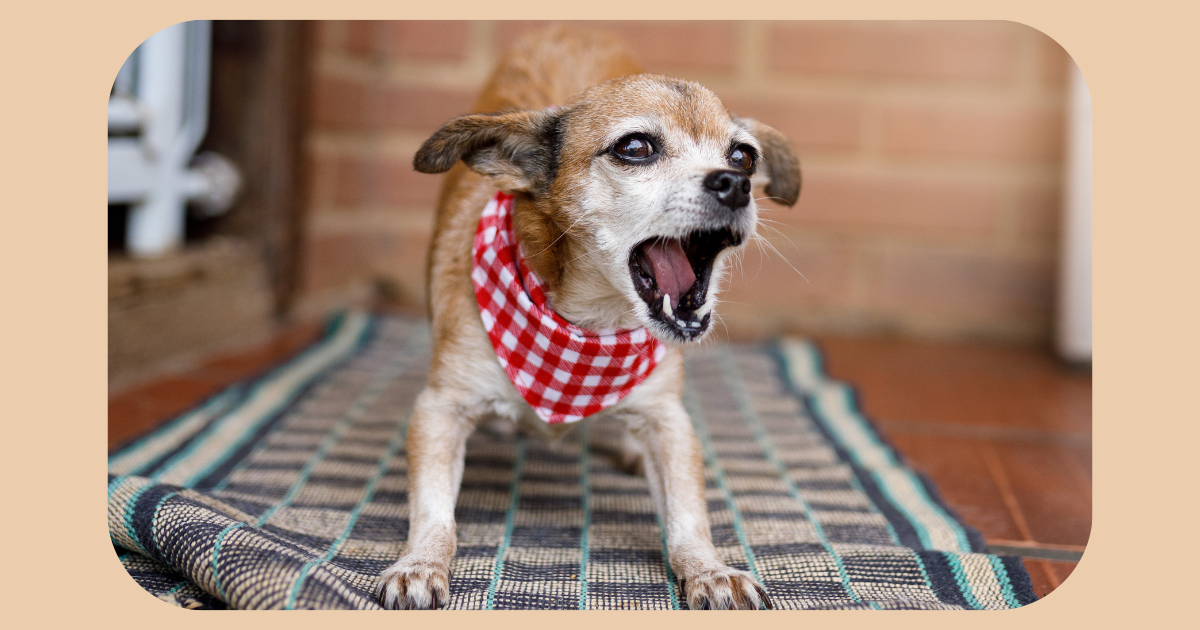10 must-have tools for reactive dogs
Life with a reactive dog can be challenging. Walking down the street with a dog who “freaks out” at other dogs, people, or things like ladders or loud trucks can be frustrating, stressful, or even embarrassing.
The good news is, you can build up your “reactive dog toolbox” to make outings with your dog more enjoyable for everyone. When I say “tools” I don’t mean *those* kind of tools, as in training collars designed to be aversive for your dog. Since your dog is already stressed or amped-up, adding something uncomfortable or scary would only make things worse.
Here are 10 “must-haves” for walking your reactive dog:
1. Managing the environment
The #1 tool at your disposal when living with a reactive dog? Management. How can you prevent reactions before they occur? This is where you get to be creative. Can you design a dog-walking route where your dog will see fewer triggers? Can you walk him at less-busy times of day? For example, if your dog is triggered by the sight of screaming children, take note of when the local elementary school dismisses their students for the day, then plan your walks around that time.
2. The longest leash you can use
Contrary to outdated advice that reactive dogs should walk by your side at all times, it’s important for all dogs to have freedom of movement and opportunities to sniff. Sniffing helps lower their blood pressure, among many other benefits. I use a six-foot loose leash when training reactive dogs in downtown Toronto, but if you can get away with an even longer one, go for it!
3. A treat pouch filled with small, high-value treats
Reactive dogs can be trained to do something else instead of reacting, such as look at you when they see another dog (or whatever their trigger is). You can also use a counterconditioning protocol, where the sight of another dog predicts that they’re going to get food. For either approach to work, arm yourself with a bag of treats at all times!
4. A clicker or marker word
You’ll need to “mark” either every time your dog does the preferred behaviour (such as looking at you) or every time he sees the trigger. For this you can carry a clicker, or if it’s easier, just use a verbal marker word like “yes”!
5. Happy talk
Also called “the jolly routine,” happy talk is when you talk to your dog in an upbeat, “jolly” tone to diffuse whatever trigger is in the picture. At first, you might feel a bit goofy doing it in public, but once you see the benefits you’ll get better at ignoring puzzled looks from people.
6. A well-rehearsed turn-and-go
A turn-and-go is exactly what it sounds like: When your dog is already reacting and it’s too late to intervene, just turn in the opposite direction and go as far away as you can, happy talking all the way (something like “My goodness, that was a big dog, wasn’t it? You did so well!”) Even if your feet feel like they’re stuck in concrete, muster up your energy and just go!
7. The treat scatter
If you’re already doing #3, this one will be easy! Whenever you finish your turn-and-go and you’ve achieved good distance from the trigger, grab a handful of treats from your pouch and scatter them on the grass or sidewalk. Your dog will learn to predict the “party” at the end of the turn-and-go, and should start coming along more willingly. This also gives your dog a chance to decompress from his outburst with some food and sniffing.
8. Decompression activities
The reality is, even with the best training and management, you might still have a bad walk with your reactive dog once in a while. Decompression activities like shredding, licking, and chewing are good for all dogs, but especially for dogs who’ve just had a bunch of reactions. Keep your freezer stocked with frozen Kongs, invest in some lick mats (like these aesthetically pleasing ones from Toronto company dexypaws), and save some shreddables (like cereal boxes or egg cartons) from your recycling.
9. Mental health strategies for you, the guardian!
Your dog isn’t the only one who needs to decompress after a bad walk! Reactive dog guardianship can take a toll on your mental health. You may feel like you caused his reactivity or like you’re not doing enough to help him. It’s important to remember that if you don’t take care of yourself, you can’t take care of your dog. Practice feel-good activities like going for walks without your dog or watching your favourite funny movie.
10. A certified force-free trainer
You could DIY your dog’s reactivity training, but it can help to bring a professional on board: someone who’s familiar with different techniques and how to execute them for maximum effect. It’s also nice to have you and your dog’s own personal cheerleader!
In Toronto and struggling with your reactive dog? I can help with reactive dog training in Toronto.





